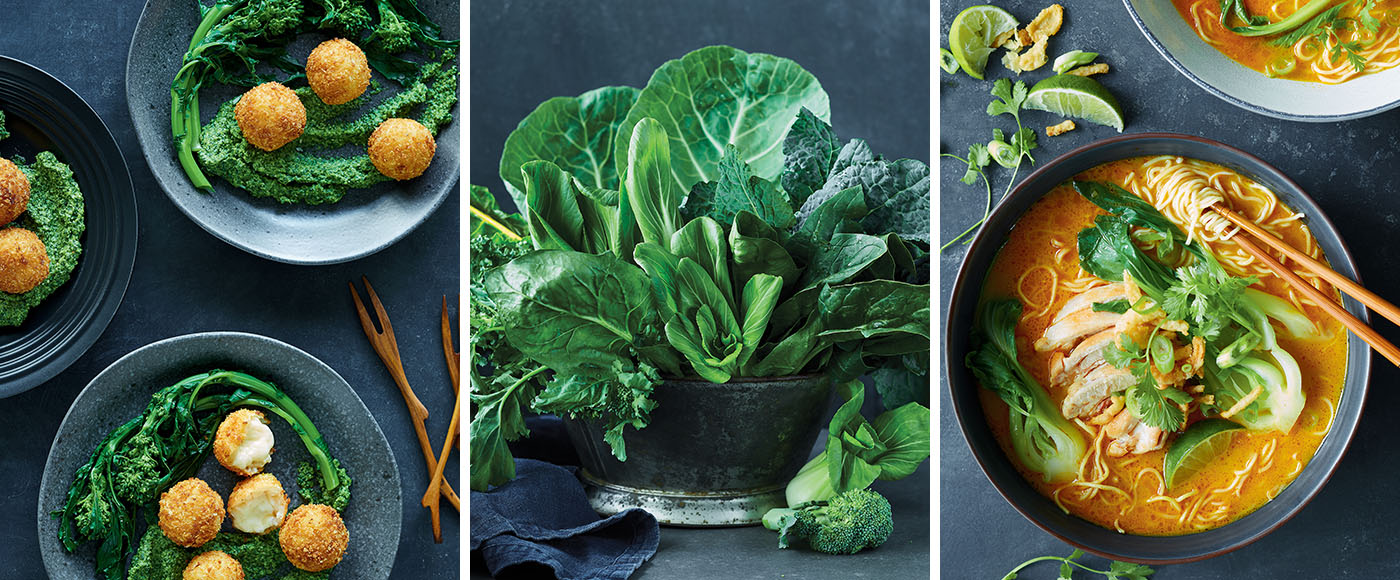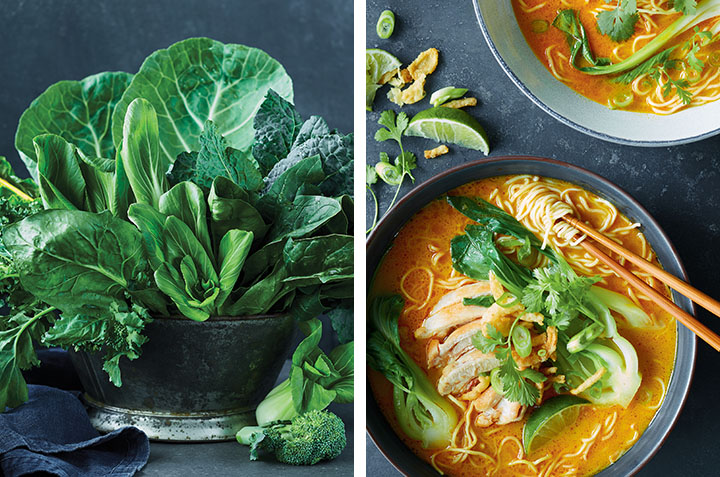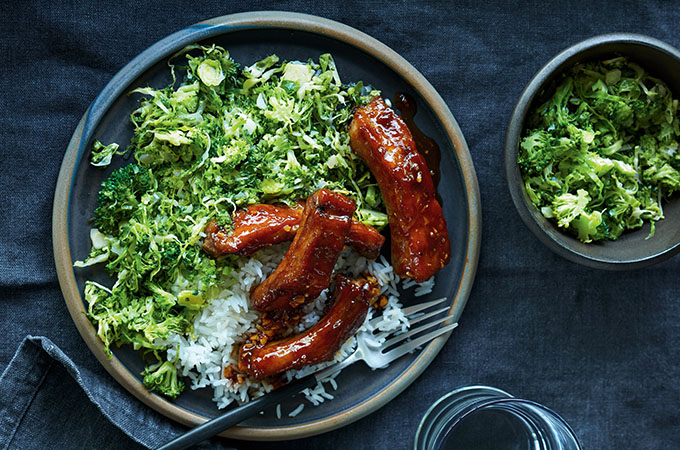1. Mozzarella Arancini and Rapini Pesto
In this version of arancini, a Sicilian specialty, we were inspired by suppli al telefono, rice croquettes stuffed with cheese that are popular in Rome. They are accompanied by a pesto made with rapini, whose bitterness is skilfully balanced by the sweetness of roasted pine nuts and the saltiness of pecorino, a sheep’s milk cheese.
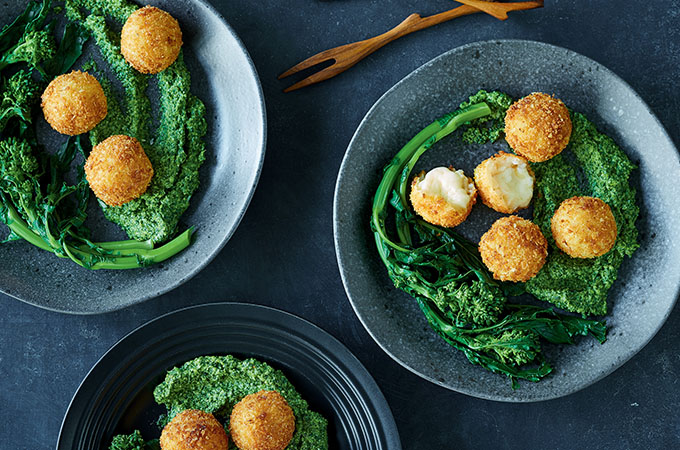
HORS D'OEUVRES
Mozzarella Arancini
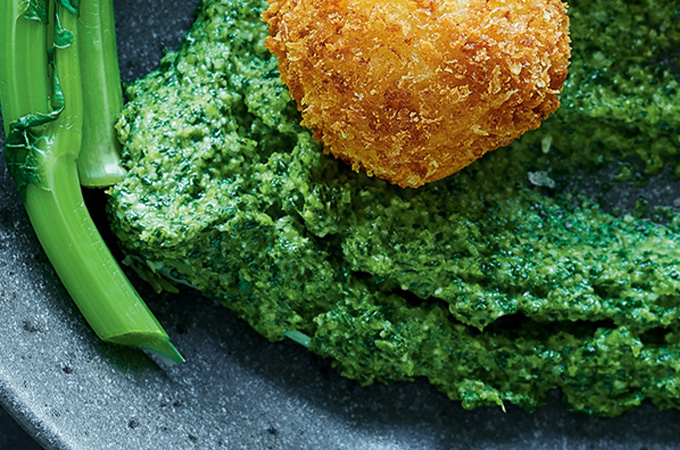
SAUCES, BUTTER AND PESTO
Rapini Pesto
Rapini (a.k.a. broccoli rabe) is in the same family as cabbage and turnip and is a vegetable that grows in cool weather. Delicious from stem to tip, it’s reminiscent of broccoli, but more bitter, and is best eaten when its leaves are green—before the flower buds open. It can be kept for five or six days in the refrigerator.
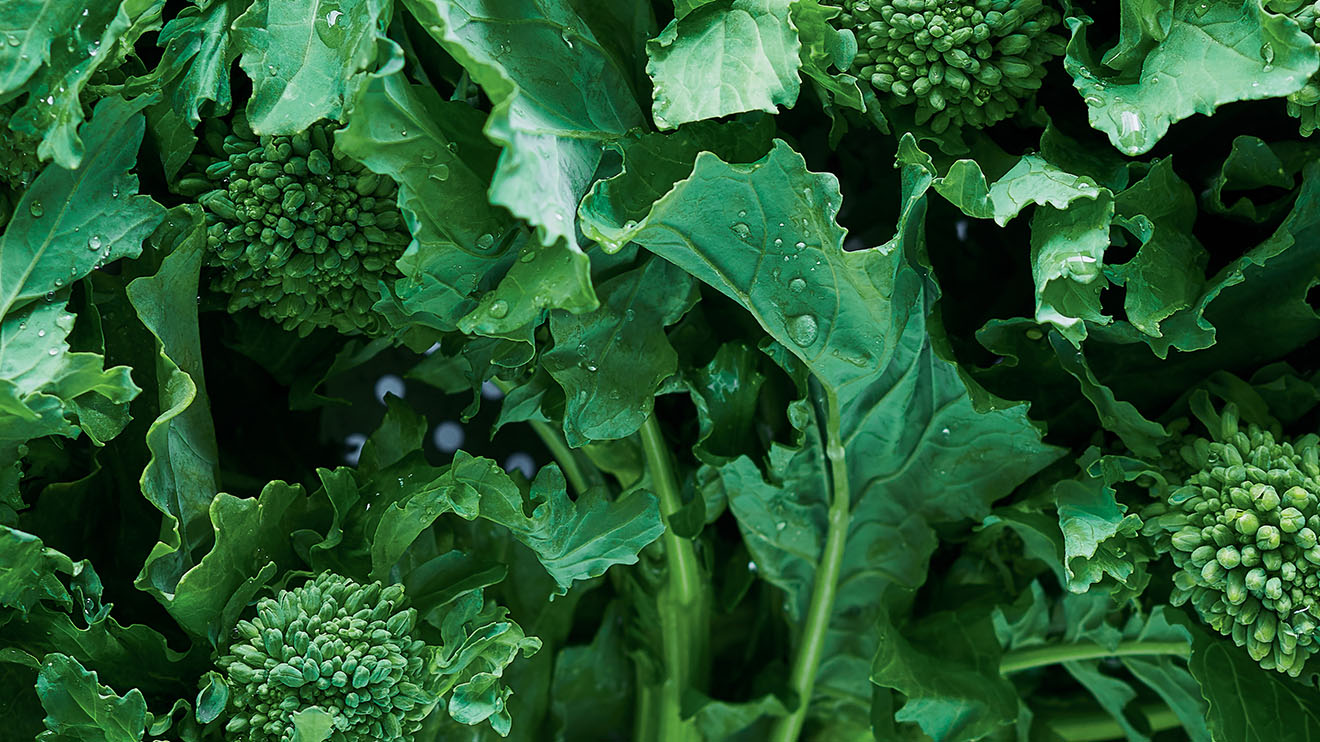
2. Tuscan Kale and Red Onion Quiche
This is the ideal recipe for an introduction to Tuscan kale (read more about it below). Once baked in the oven with garlic and red onions and then mixed with eggs and cheese, this hearty green is sure to become a new favourite.

QUICHES AND SAVOURY PIES
Tuscan Kale and Red Onion Quiche
As the name suggests, this vegetable comes to us from Tuscany, a region in central Italy. It’s considered a type of kale, but its flavour is much milder. Very pretty, its drooping foliage is somewhat reminiscent of palm trees and its leaves are narrow, fleshy, very embossed and dark bluish in colour, sometimes almost black. It is part of the traditional ingredients of minestrone soup and can be kept for more than a week in a cool place.
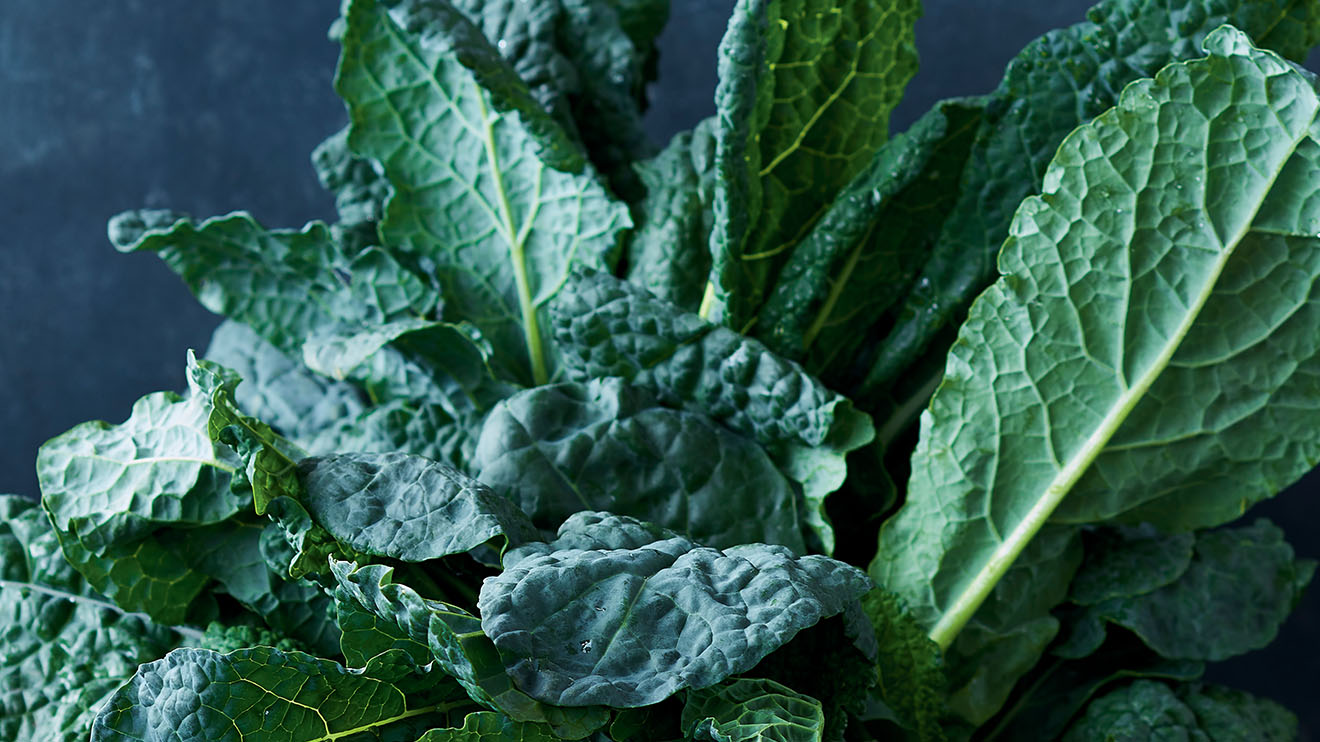
3. Kitchen Sink Green Vegetable Soup
We use baby spinach and collard greens for this soup, but lots of other green vegetables can also do the trick. The base of chicken, potato, onion, garlic and broth works with everything!
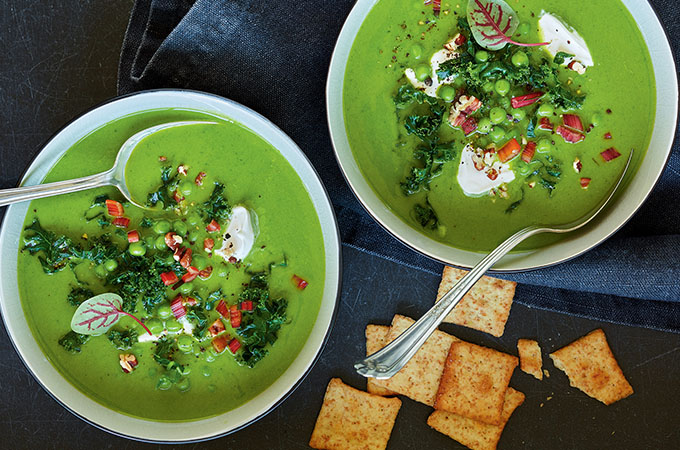
SOUPS AND BROTHS
Kitchen Sink Green Vegetable Soup
Also considered a type of cabbage (but without the heart), collard greens are known for their thick, flattened leaves with a rather leathery white petiole (or rib), which is usually removed. This vegetable has a pungent taste that fades when blanched. Wrapped in a damp cloth, its leaves can be kept in the refrigerator for four or five days.
4. Sticky Glazed Ribs with Green Vegetable Chiffonade
To accompany these sweet and salty Asian ribs, broccoli and Brussels sprouts are served al dente and coated with nuoc cham sauce.
From the cabbage family, broccoli appeared quite recently in cooking, having only been grown commercially since the 1920s. Its scientific name evokes a shrub whose trunk, leaves and flowers can all be eaten, but it is best consumed green, before its yellow flowers open. There are also beautiful, slightly purple cultivars, such as Burgundy or Early Purple.
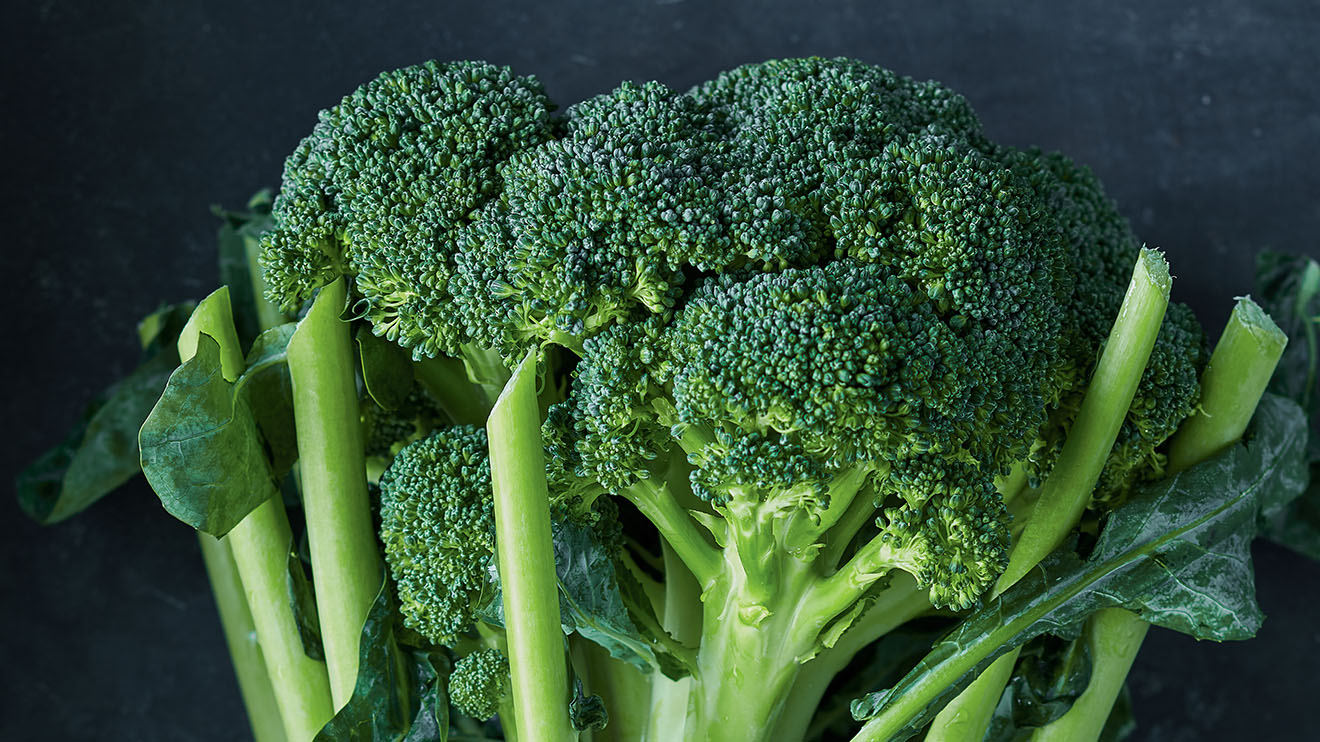
5. Seared Tuna with Wilted Swiss Chard and Green Onion Broth
Not sure what to do with Swiss chard? In this recipe, the entire vegetable is used; the stems and leaves are cut into small pieces and pan-fried with peppers, garlic and olives. They accompany sliced tuna steaks in a broth with green onions and chives.
Swiss chard is a beet that has been cultivated for a long time for its generous spinach-tasting foliage and celery-flavoured chubby petiole. Mutations and crosses have given the stems a variety of very beautiful colours. It can be kept for four or five days in the refrigerator.
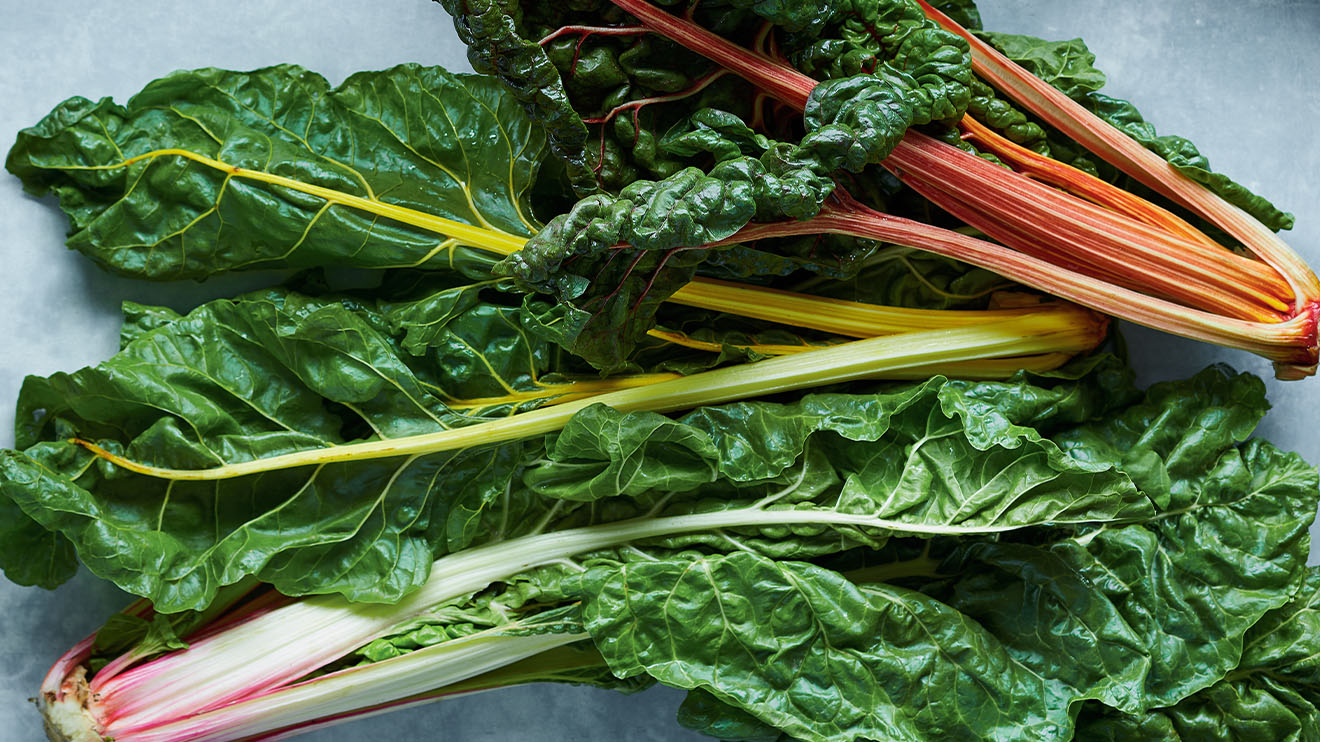
6. Coconut Curry Ramen with Chicken and Bok Choy
In this creamy and fragrant soup inspired by the flavours of northern Thai cuisine, baby bok choy are added to the broth right before serving so that they remain very crisp and crunchy.

ASIAN-INSPIRED RECIPES
Coconut Curry Ramen with Chicken and Bok Choy
Bok choy (or pak choi) is a Chinese cabbage that originates from the delta of the Yangtze River in China. It is known for its small, spoon-shaped leaves. Considered one of the first domesticated vegetables, it’s highly regarded in Asian cuisines, especially for its versatility and delicate taste—which offers nuances of cabbage and mustard.
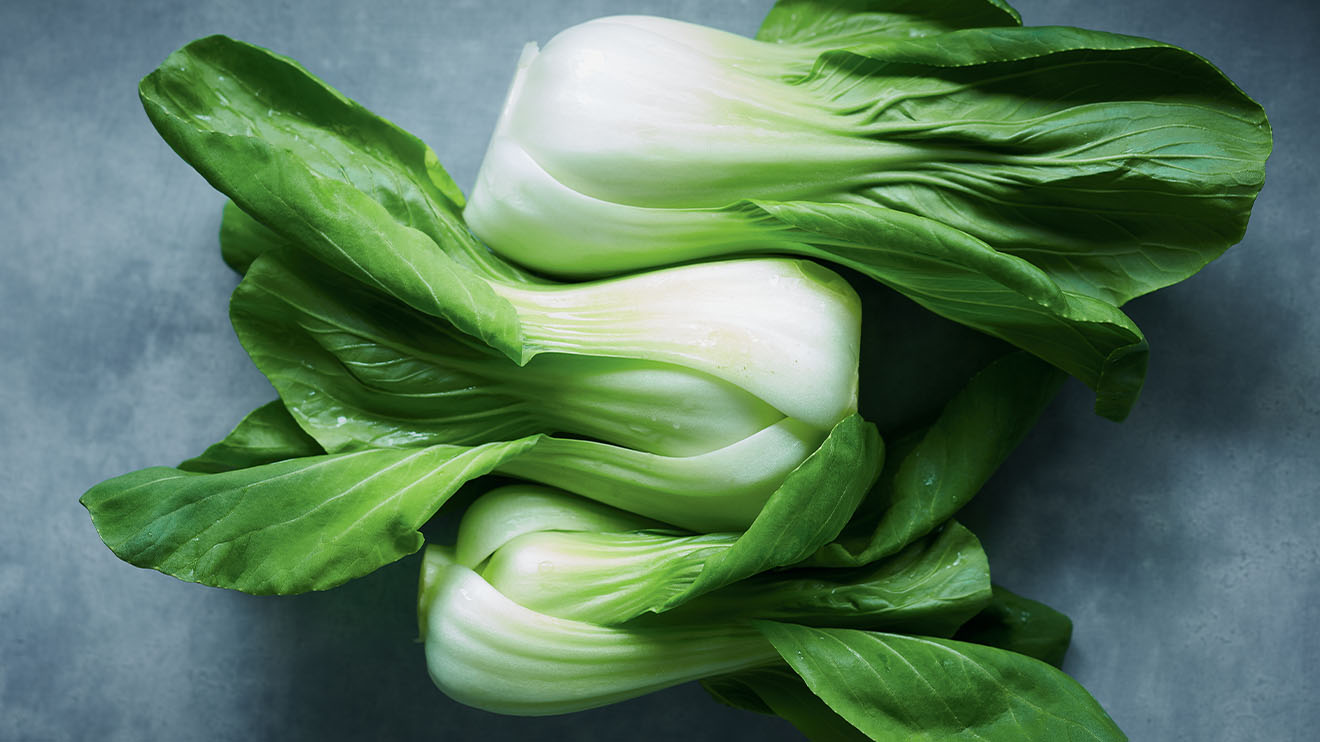
7. Spinach and Tropical Fruit Smoothie Bowl
This smoothie bowl is full of different textures. With its large portion of raw spinach, homemade granola, frozen exotic fruits and creamy avocado, it’s fresh and perfect for a vibrant lunch.
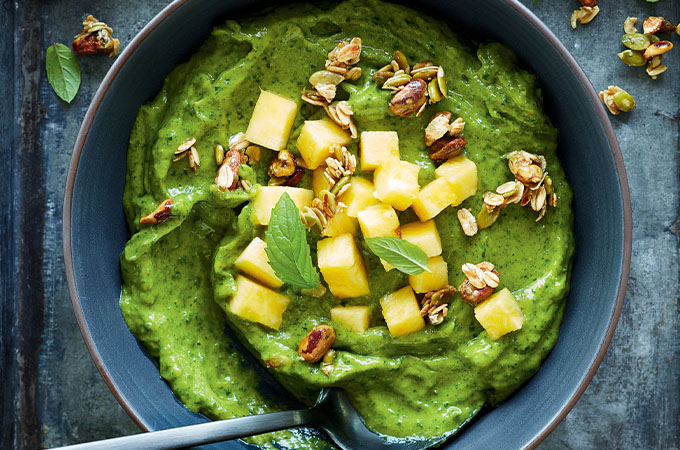
POWER BOWLS
Spinach and Tropical Fruit Smoothie Bowl
Loved for its slightly embossed leaves, spinach is often used in salads. Some of its varieties are grown specifically to produce “baby” spinach. Usually green, its leaves also display burgundy colours or red veins and stems depending on the variety. In cultivation, spinach prefers cool temperatures. This plant with delicate foliage should be eaten quickly.
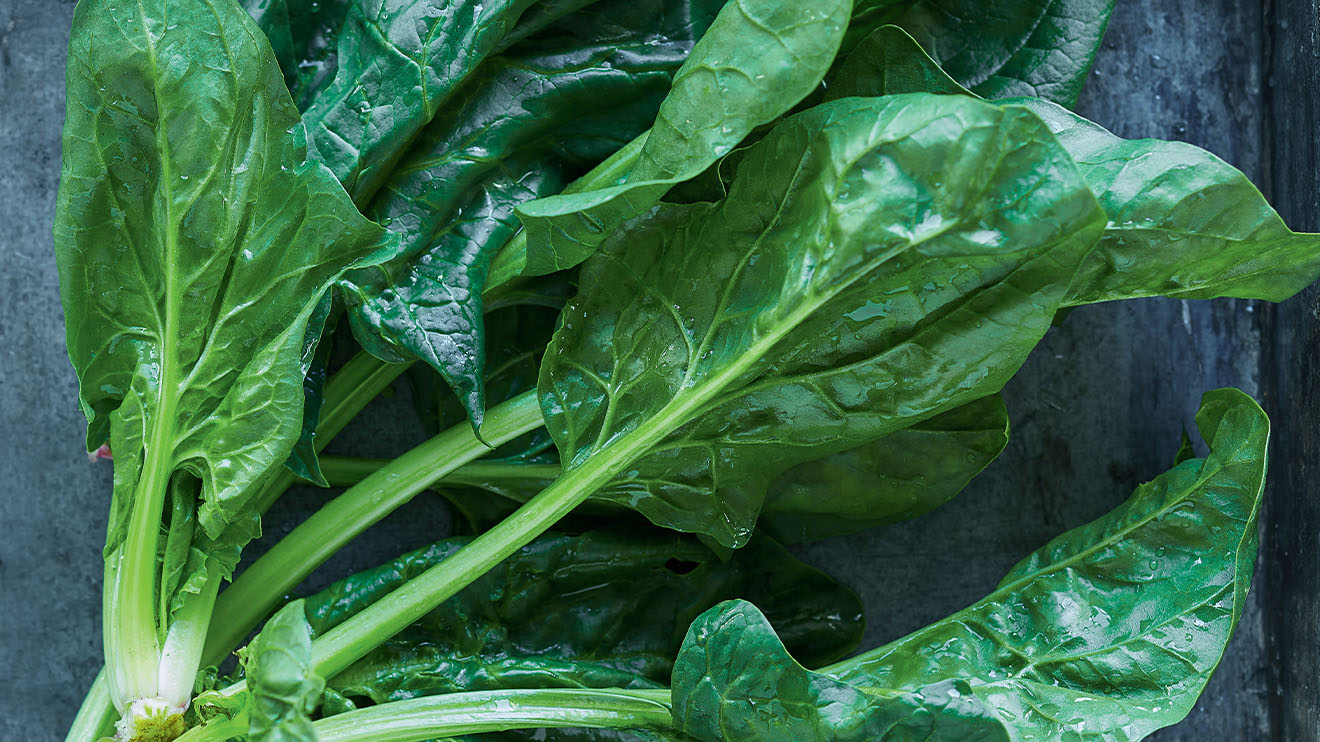
8. Crispy Kale and Avocado Toast
These loaded pieces of baguette are a lunchtime delight. Baked with Montreal steak spices, kale becomes crispy, salty and pungent, like chips! Add some extra doses of green with avocado purée and sliced grapes.
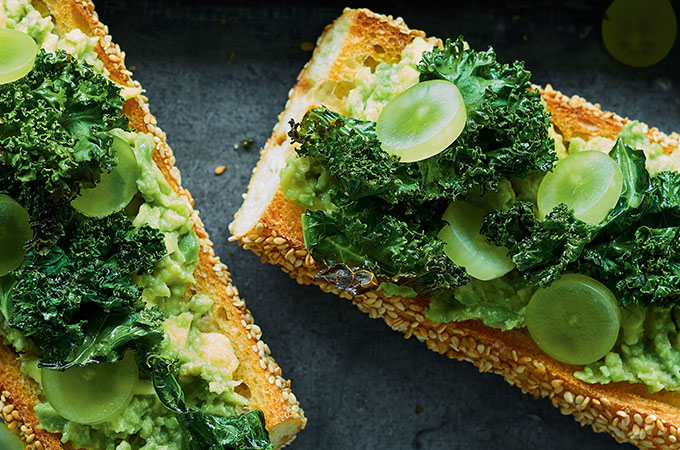
SANDWICHES
Crispy Kale and Avocado Toasts
More popular than ever, kale is a cabbage that, similar to rapini, comes from around the Mediterranean region. Its curly or embossed leaves that are often fan-shaped emerge from the centre of the plant. In cultivation, it is resistant to snow and light frosts, which improves its flavour and tenderizes its foliage. It can be kept for four or five days in the refrigerator, the leaves lightly wrapped in a damp cloth or paper towel so as to avoid drying out.
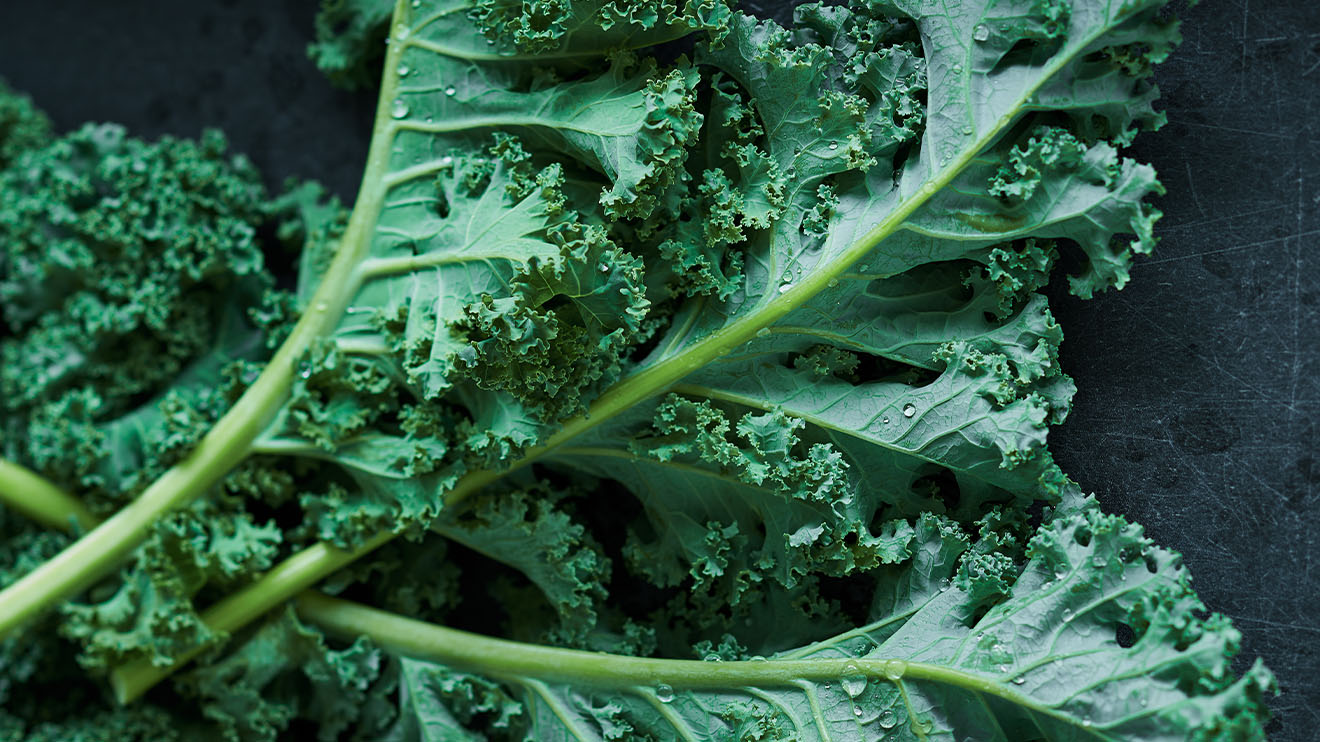
Looking for more vegetable dishes? Our vegetable and gratinée recipes are perfect for the colder season:

